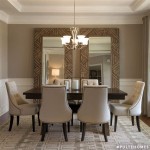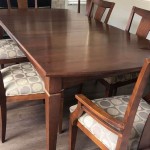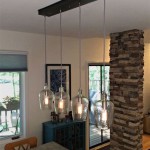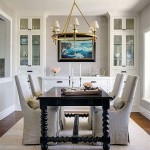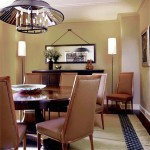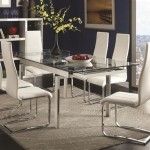Contemporary Lighting For Dining Room: A Comprehensive Guide
The dining room, traditionally a space for family meals and social gatherings, has evolved into a multifaceted area often used for work, study, and entertainment. Consequently, lighting plays a crucial role in setting the mood, enhancing functionality, and complementing the overall design aesthetic. Contemporary lighting solutions for the dining room offer a diverse range of options, moving beyond simple overhead fixtures to incorporate layered lighting schemes that cater to various needs and preferences. Understanding the principles of contemporary lighting design and exploring the available options are essential for creating a dining space that is both visually appealing and practically functional.
The term "contemporary" in design generally refers to styles that are current and evolving, often drawing inspiration from modern designs while incorporating new materials, technologies, and aesthetic trends. Contemporary lighting, therefore, encompasses a wide spectrum, from minimalist geometric fixtures to sculptural statement pieces, often featuring energy-efficient technologies like LED lighting. This article will delve into the key considerations for selecting contemporary lighting for the dining room, exploring different types of fixtures, techniques for layering light, and the importance of considering the room's overall design and function.
Understanding the Layers of Dining Room Lighting
Effective dining room lighting is rarely achieved with a single light source. Instead, a layered approach is recommended, combining different types of lighting to create a balanced and versatile environment. There are typically three main types of lighting to consider: ambient, task, and accent lighting. Each serves a distinct purpose and contributes to the overall illumination of the space.
Ambient lighting, sometimes referred to as general lighting, provides the overall illumination of the room. Its purpose is to create a comfortable level of light for general visibility. The goal is not to be too bright or harsh, but rather to provide a soft, even glow that allows people to move around the room safely and comfortably. Fixtures suitable for ambient lighting in a dining room include chandeliers, pendant lights, recessed lighting, and even sconces that direct light upwards.
Chandeliers, particularly those with adjustable dimmers, can serve as both a focal point and a source of ambient light. Their design can range from classic crystal designs updated with modern finishes to completely contemporary pieces made of metal, glass or even recycled materials. Pendant lights, hung individually or in clusters, offer another versatile option. Recessed lighting provides a clean, minimalist look, while sconces can add warmth and visual interest to the walls.
Task lighting is designed to illuminate specific areas for specific activities. In a dining room, task lighting is most often focused on the dining table itself. This type of lighting should be bright enough to facilitate activities like eating, reading, or working, without creating glare or shadows. The most common form of task lighting for dining tables is a pendant light or chandelier positioned directly above the table.
When selecting task lighting, consider the size and shape of the table. A larger table may require a larger fixture or multiple pendants to provide adequate illumination. The height of the fixture is also important; it should be low enough to provide sufficient light, but high enough to avoid obstructing views across the table. Dimmers are highly recommended for task lighting, allowing you to adjust the light level depending on the activity.
Accent lighting is used to highlight specific features of the room, such as artwork, architectural details, or decorative objects. It adds depth and visual interest to the space, creating focal points and showcasing the room's design elements. Accent lighting can take many forms, including spotlights, track lighting, and picture lights.
In a dining room, accent lighting can be used to highlight a piece of art on the wall, to illuminate a decorative display in a hutch, or to create a dramatic effect by washing a wall with light. The key is to use accent lighting sparingly and strategically, focusing on the most visually appealing aspects of the room. When selecting accent lighting, consider the color temperature of the light and how it will interact with the colors of the objects being illuminated.
Exploring Contemporary Lighting Fixture Options
The market for contemporary lighting fixtures is vast and constantly evolving, offering a wide range of styles, materials, and technologies. Understanding the different types of fixtures available and their specific characteristics is essential for making informed decisions when selecting lighting for the dining room.
Chandeliers remain a popular choice for dining rooms, offering a touch of elegance and sophistication. Contemporary chandeliers often depart from traditional crystal designs, incorporating sleek lines, geometric shapes, and innovative materials. Metal finishes like brushed nickel, matte black, and polished chrome are common, as are glass and acrylic elements. Contemporary chandeliers may also feature integrated LED lighting, offering energy efficiency and long-lasting performance.
Pendant lights are another versatile option for dining room lighting. They can be hung individually above a small table, or in clusters above a larger table. Pendant lights come in a wide range of shapes, sizes, and styles, from minimalist glass globes to intricate metal designs. They can be used to create a focal point, provide task lighting, or add a touch of personality to the room. When selecting pendant lights, consider the scale of the fixture in relation to the table and the overall size of the room.
Recessed lighting provides a clean, minimalist look and is often used for ambient lighting. Recessed lights are installed flush with the ceiling, creating a seamless and unobtrusive source of light. They can be used to provide general illumination, highlight architectural features, or supplement other lighting fixtures. Recessed lighting is particularly well-suited for contemporary dining rooms with low ceilings, as it doesn't take up any vertical space.
Track lighting offers a flexible and adjustable lighting solution. It consists of a track that is mounted to the ceiling, with multiple light fixtures that can be positioned and aimed as needed. Track lighting is ideal for highlighting artwork, architectural details, or specific areas of the room. It can also be used as a source of task lighting, providing focused illumination for the dining table or a buffet.
Sconces are wall-mounted light fixtures that can add warmth and visual interest to the dining room. They can be used to provide ambient lighting, accent lighting, or even task lighting. Sconces come in a wide range of styles, from minimalist designs to more decorative options. They can be particularly useful in smaller dining rooms where space is limited.
Linear suspension lights are a modern option, featuring long, slender fixtures suspended horizontally above the dining table. This style often incorporates integrated LED technology and can provide excellent task lighting while adding a sleek, contemporary aesthetic. These fixtures are particularly well-suited for rectangular or elongated dining tables.
Considering Design and Functionality
Selecting contemporary lighting for the dining room requires careful consideration of the room's existing design and intended functionality. The lighting should complement the overall aesthetic of the space while also meeting the specific needs of the users. Factors such as the size of the room, the color palette, the furniture style, and the activities that will take place in the dining room should all be taken into account.
Room Size and Layout: The size of the dining room will influence the type and size of lighting fixtures that are appropriate. A large dining room may require multiple lighting fixtures to provide adequate illumination, while a small dining room may only need a single pendant light or chandelier. The layout of the room will also affect the placement of the lighting fixtures. Consider the location of windows and doors, as well as the placement of furniture, when planning the lighting design.
Color Palette: The color palette of the dining room will impact the perceived brightness and warmth of the lighting. Light colors will reflect more light, making the room feel brighter and more spacious. Dark colors will absorb more light, making the room feel cozier and more intimate. Consider the color temperature of the light when selecting lighting fixtures. Warm light (2700K-3000K) will create a cozy and inviting atmosphere, while cool light (4000K-5000K) will create a more energizing and modern feel.
Furniture Style: The style of the furniture in the dining room should be considered when selecting lighting fixtures. Contemporary furniture often features clean lines and minimalist designs, which are well-suited to modern lighting fixtures. Traditional furniture may be better complemented by more ornate or classic lighting styles. The scale of the lighting fixtures should also be proportionate to the size of the furniture.
Intended Use: The intended use of the dining room will influence the type and level of lighting that is required. A dining room that is primarily used for formal dinners will require different lighting than a dining room that is used for casual meals and family gatherings. Consider the activities that will take place in the dining room when planning the lighting design. Dimmers are an excellent way to adjust the lighting to suit different activities.
Energy Efficiency: Modern contemporary lighting can be very energy efficient. Opting for LED fixtures not only reduces energy consumption but also offers a longer lifespan compared to traditional incandescent bulbs. Consider the long-term cost savings when choosing lighting fixtures.
In essence, selecting contemporary lighting for a dining room is a balance of aesthetics and functionality. By carefully considering the layering of light, exploring available fixture options, and understanding the design and function of the room, it is possible to create a dining space that is both beautiful and practical.

Modern Dining Room Lighting Light Fixtures

Dining Room Lighting Blown Glass Chandelier Unique Ceiling Contemporary Light Fixture Modern For Dine Etsy Norway

6 8 10 Lights Mid Century Modern Ceiling Light Black Rc Remote Dimming

Lnc Modern 6 Light Gold Asymmetric Candlestick Chandelier Contemporary Pendant Lighting For Dining Room Kitchen Living A67rryhd13599g6

Modern Seamless Curve Led Ceiling Lighting Metallic Dining Room Chandelier Light In Gray White Clearhalo

Modern Lighting For Dining Room Dine Chandelier Hanging Lamp Long To Fill High Ceiling Space Etsy

Tomax Modern Wave Chandelier Adjustable Suspended Light For Kitchen Island Dining Room Lounge Lighting

Zevni 44 In 5 Light Brass Gold Dining Room Li Chandelier Modern Black Kitchen Island Pendant With Seeded Glass Z 18qyyj2q 50c5

Modern Dining Room Lighting Light Fixtures

Modern Style Lighting Guide Destination Flip The Switch

